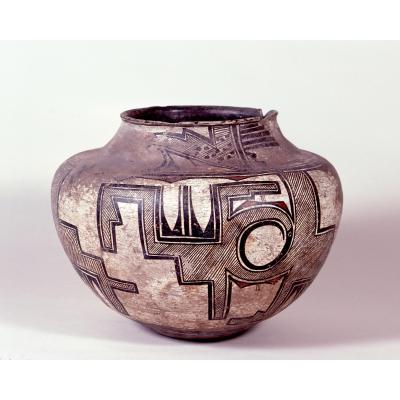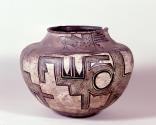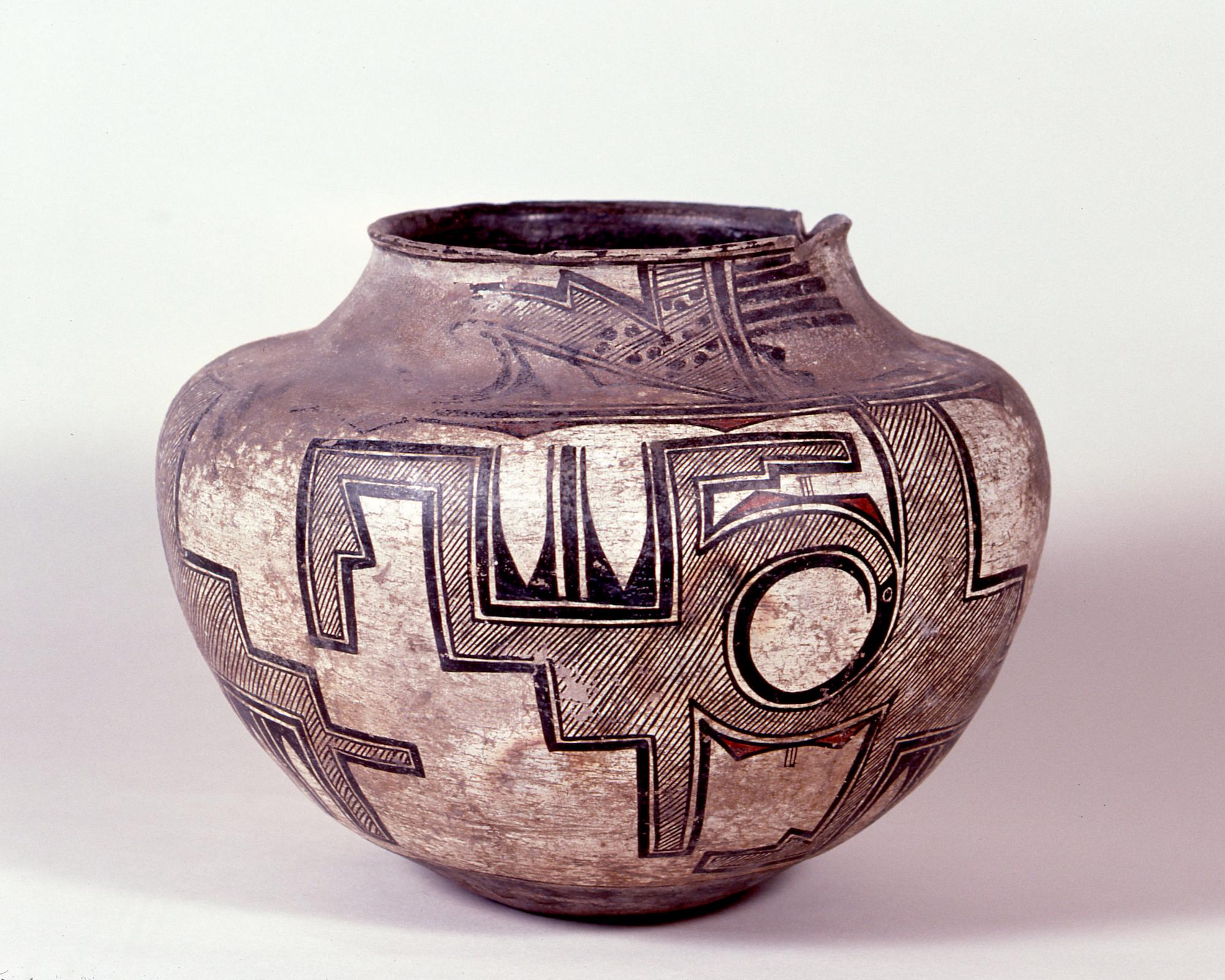
Photograph by Addison Doty. Copyright 2010 School for Advanced Research.
Water jar | K'yabokya de'ele
Date: 1880 - 1890
Artist or Maker: Unknown
Dimensions:
30.5 x 40.6 cm (12 x 16 in.)
Medium: clay | paints
Credit Line: Obained by the Indian Arts Fund for the permanent collection.
Place Made:
Zuni Pueblo, McKinley County, New Mexico, Southwest, United States, North America
Object Number: IAF.475
Not on view
Tribal Collection Review RemarksJim Enote and Octavius Seowtewa during collection review visit February 17 and 18, 2010 (Events Record “Collection Review: Zuni Tribe, Review 4”): The neck designs of this jar include rain birds and feathers. Mr. Enote explained the round dots that appear in the hatch marks of the rainbird elements have been described by Zuni community members as plants in a garden and also as a type of step design indicating clouds. The body of the jar is decorated with large rainbird designs that are filled with rain line hatching. There are also feather and step cloud elements present. The row of orange triangular elements wrapping around the jar, just below the neck design, is a representation of water waves. The jar's rim has a lip, making it possible to have tied a cover over it for storage; it may have also been covered for storage by setting a broken pot base into the mouth of the jar. It could also have been used as a drum. The decoration on this jar is a very good example of this type of rainbird design. It was frequently used by Catalina Zuni. Both Mr. Enote and Mr. Seowtewa were of the opinion that, given the very high quality of the jar, both in its construction and decoration, it is possible that it was made by her. (Unfortunately, no documentation exists to confirm this.)
The word for a water jar in Zuni is “k'yabokya de'ele,” which translates to “water container vessel” in English. The intended use for these jars was to store and carry water, but they could also be used to store other items.
In Collection(s)
The Indian Arts Research Center, in collaboration with Native American community scholars, strives to present accurate collections records. Records may be updated as new information becomes available and is reviewed with the Native American community having cultural affinity to particular items. Please write to iarc@sarsf.org if you have questions or concerns related to the documentation.


